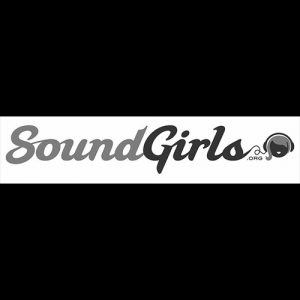
Taking the time to evaluate and critique your resumé is vital to putting your best foot forward, and as we’re all at a pause, there’s no better time to do that than now. That piece of paper (or pdf file) becomes your first impression to designers, production managers, and other employers. But all too often, even starting to write your resumé can feel like an impossible task. Even more so because there’s very little standardization of what they should look like for theatre. Sifting through websites with tips and helpful hints for a traditional, corporate-based structure can range from confusing to downright frustrating when you’re trying to apply it to a completely different world.
At its heart, your resumé is telling a story. Where did you come from? What have you done? How have you progressed over your career? You’re just telling it in bullet points instead of prose. Anyone looking at your resumé is trying to do a couple of things: they want to know what skills you have and what shows you’ve worked on, or people you’ve worked with, but they’re also looking for information about who you are and if you’d be a good fit for a team they’re building. Your resumé gives them small indications of that based on its presentation: did you slap together a slipshod line of things you’ve worked on with your name pasted at the top? Or does it look like you took some time and pride in presenting yourself to potential employers?
Over the course of your career, you’ll end up with a couple different versions of your resumé. When you’re first starting out and have less experience, you may include some details about what your jobs entailed, but once you’re established in your career, your resumé neatens up and becomes a list of the shows you’ve worked on and what your role was. Even then, you still may have a couple versions to focus on different skills or shows: if you’re looking for design work as opposed to mixing work as opposed to production work.
For example, when I left college, I broke my experience in a few categories: Touring, A1, A2, Corporate, and Other Experience. It was busier than it needed to be and didn’t have much organization other than dividing up my experience. After working for a few years, my resumé shifted to two categories: Touring and A1. That simplified things by getting rid of my college experience, starting to use sound designers instead of directors for shows, and formulating a better narrative. Instead of throwing every show I’d done in the mix, I used my touring experience to highlight my progression from an A2 to A1, and selected certain shows I’d mixed off of tour to show that I’d worked at the same festival multiple years in a row (i.e. people wanted to work with me again).
Looking forward, if my goals shift to getting off the road in (likely to find a mixing-focused job where I could stay in one location), I would make a new resumé that focuses on my A1 experience (including touring, sit-downs, festivals, one-offs, etc), and pushes my A2 work on the road into a less prominent category.
Typically the hardest part of a resumé to write is the Experience category. While your name, contact info, education, and skills are cut and dry lists, here you have to look through your jobs and sort out which ones you want to use. To help, start by asking yourself what story you want to tell:
Your resumé will look different depending on where you are in your career. My jobs on tour don’t need explanation other than if I was the A1 or A2 because most people reading my resumé are familiar with the job responsibilities of those roles. However, if you worked at a theatre where your official title was “Audio Supervisor,” but your job included designing, mixing, A2-ing, etc, it’s helpful to include that. Giving additional information on a job can be helpful if you’re at the beginning of your career and have less experience to put on your resumé. Be clear and concise (i.e. lean towards bullet points vs sentences) and make these things the first to go as you work more and can streamline your resumé.
Did you climb the proverbial ladder from one position to another? Have you consistently worked your way up to bigger and bigger shows? Your resumé should help showcase not only what you know now, but how you’ve grown in your professional life.
Tailor your resumé to the job you’re applying for. If you’re applying for a mixing position that highlights your design experience, you’ll want to create a new version of your resumé that focuses on the relevant skills.
Don’t discount “Other Experience”: Any work you’ve done is valid experience. Non-theatre or non-sound related jobs can display a wider range of skills and shouldn’t be completely ignored. It won’t be the focus of your resumé but can absolutely be included.
Once you know what you’re going to put in your resumé here are some overall notes to keep in mind:
When picking a reference, it depends on your job. If you’re a designer, you want to choose directors or other designers you’ve worked with. As an A1 or A2, use designers, associates, or production colleagues. (I’ll use resident directors or music directors as well, but it’s better to prioritize other sound people first.) A2s can also use their A1s.
You should always include your references. There are a couple of exceptions to this: if you’re sending resumé-blasts out to a variety of potential jobs, or if you’re posting your resumé online in a public forum where your reference might not want their personal contact information displayed.
Once you have a resumé written, always double-check for typos, inconsistencies, etc. (Then have a friend check, or two or three to be on the safe side.) This is something you’ll constantly add to and change as you progress in your career. After doing research for this post, I went back and made several tweaks, and that was a resumé I’ve used for several years. Eventually, your reputation may proceed you enough that you don’t use your resumé as much, but until then, make sure you make the best first impression you can.
Article by SoundGirl: Heather Augustine
Another great article by SoundGirls: Healthy Ears are Happy Ears: Tips for Audio Professionals
Follow SoundGirls on Instagram, Twitter


The mission of SoundGirls.org is to inspire and empower the next generation of women in audio. Our mission is to create a supportive community for women in audio and music production, providing the tools, knowledge, and support to further their careers. SoundGirls.Org was formed in 2013 by veteran live sound engineers Karrie Keyes and Michelle Sabolchick Pettinato and operates under the Fiscal Sponsorship of The California Women’s Music Festival, a 501(c)3 non-profit organization. In 2012, Karrie and Michelle participated in the “Women of Professional Concert Sound” panel at the AES Conference in San Francisco. The panel was hosted by the Women’s Audio Mission (WAM) and moderated by WAM founder Terri Winston. Terri brought together five women working in live and broadcast audio. The groundbreaking panel (which also included Jeri Palumbo, Claudia Engelhart and Deanne Franklin), provided young women and men a glimpse into life on the road, tips and advice, and a Q & A with the panelists. More importantly though, was how incredibly powerful the experience was for the panelists. We had all been in the business for 20 years or more, yet most of us had never met before that day and within minutes we bonded like long-lost sisters. We were struck by how similar our experiences, work ethics, and passions were and wondered why our paths had never crossed and how our careers would have been different had we been there to support each other through the years. Each of us are strong on our own, but together we were even stronger and a powerful force. We were empowered. Each of us had been asked hundreds of times in our careers: Are there other women doing sound? How did you get into sound? How would a young woman go about getting into sound? Through creating SoundGirls.Org, we hope to establish a place for women working in professional audio to come for support and advice, to share our success and failures, our joys and frustrations, and for empowerment and inspiration.
Read Full Profile© 2021 TheatreArtLife. All rights reserved.

Thank you so much for reading, but you have now reached your free article limit for this month.
Our contributors are currently writing more articles for you to enjoy.
To keep reading, all you have to do is become a subscriber and then you can read unlimited articles anytime.
Your investment will help us continue to ignite connections across the globe in live entertainment and build this community for industry professionals.